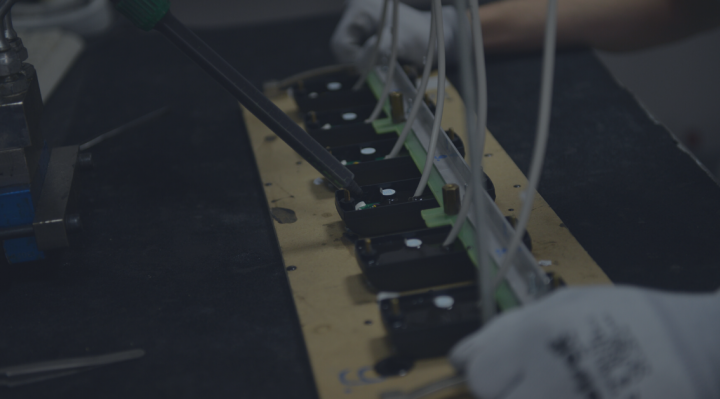Conformal coating is a widely utilised approach for protecting printed circuit boards (PCB) from the adverse effects of the external environment. The protective chemical layer provides a multifaceted defence to the circuits, effectively extending their lifespan and improving reliability. Discover the advantages of conformal coating on PCB and learn about the challenges of the method.
Conformal coating on PCB – advantages and benefits
The conformal protective barrier is applied to sensitive electronic components, offering additional protection against harsh environmental conditions that the PCB may face. Covering circuit boards with conformal coating provides:
• protection against dust, dirt, and other contaminants
• protection against aggressive chemical environments, as well as oxidation and corrosion
• protection against thermal stress
• protection against mechanical damage
• prolonging the longevity of electronic devices, particularly when used in demanding environmental conditions
• minimal increase in product weight
The vast array of advantages of conformal coating on PCBs, including enhanced efficiency, greater reliability of these components, and its positive impact on their life performance, is fueling a consistent rise in customer demand for conformal coating services.
For whom is the conformal coating process of PCB intended?
Conformal coating services for printed circuit boards are targeted at many industries, primarily encompassing:
• the automotive and aerospace industries, which demand highly reliable electronics capable of withstanding challenging environmental conditions;
• the military and defence industry, a sector in which devices are subjected to extreme conditions and thus require additional protective measures;
• medical equipment manufacturers, who are obligated to adhere to strict standards of reliability and hygiene.
Applying a conformal coating
The conformal coating process involves multiple steps, and the approach varies based on the selected method of application. There are three primary techniques for applying the coating:
• brushing – for low-volume manufacturing, finishing, and repairing units. This method demands highly skilled operatives to achieve an adequate level of protection. It is associated with a low level of precision and poor repeatability;
• dipping – in this technique, printed circuit boards are submerged in a conformal coating solution, ensuring comprehensive coverage. However, this method's drawbacks include dealing with gravitational dripping and the necessity to mask components that should remain uncoated. It requires also a proper PCB design. The method is marked by its limited flexibility;
• spraying – coatings are applied using a sprayer (machine, gun, spray booth). Aerosol allows for high precision and great accuracy of coverage.
Standards for conformal coating encompass not only the choice of application method but also the choice of appropriate preparations for printed circuit boards. The selection of the coating preparation is influenced by various factors, including the chosen curing method, which represents a crucial subsequent step in the conformal coating application process.
The coating is cured using UV radiation or through thermal means. A critical consideration with ultraviolet curing is its limitation: only areas of the coating exposed to light effectively cure. This limitation may lead to the uncontrolled dispersion of the uncured substance. For example, the preparation might seep under the socket and over time leak into the socket, causing damage. In contrast, thermal curing doesn't encounter this issue, providing uniform curing throughout.
Conformal coating services – what problems need to be solved?
Irrespective of the methods used for application and curing, several common challenges consistently emerge during the conformal coating process that necessitate effective resolution:
• covering the appropriate areas;
• precision in application;
• leaving "clean" sockets, sensors, microphones, etc.;
• applying the correct thickness of the layer;
• the risk associated with capillary forces causing the coating material to "creep" onto components where it is not intended to be.
Conformal coating standards – how to meet them?
The final step in the conformal coating process is rigorous quality control. Most companies rely solely on visual inspection to verify the accuracy of the coating application, however, this method does not guarantee the highest quality. A good solution is the automated AOI (Automated Optical Inspection) system for overseeing the coating of printed circuit boards, which operates automatically, impervious to human errors. This advanced equipment not only verifies the precise application of the coating on the PCB but also allows for the measurement of its thickness, enhancing overall quality control.







